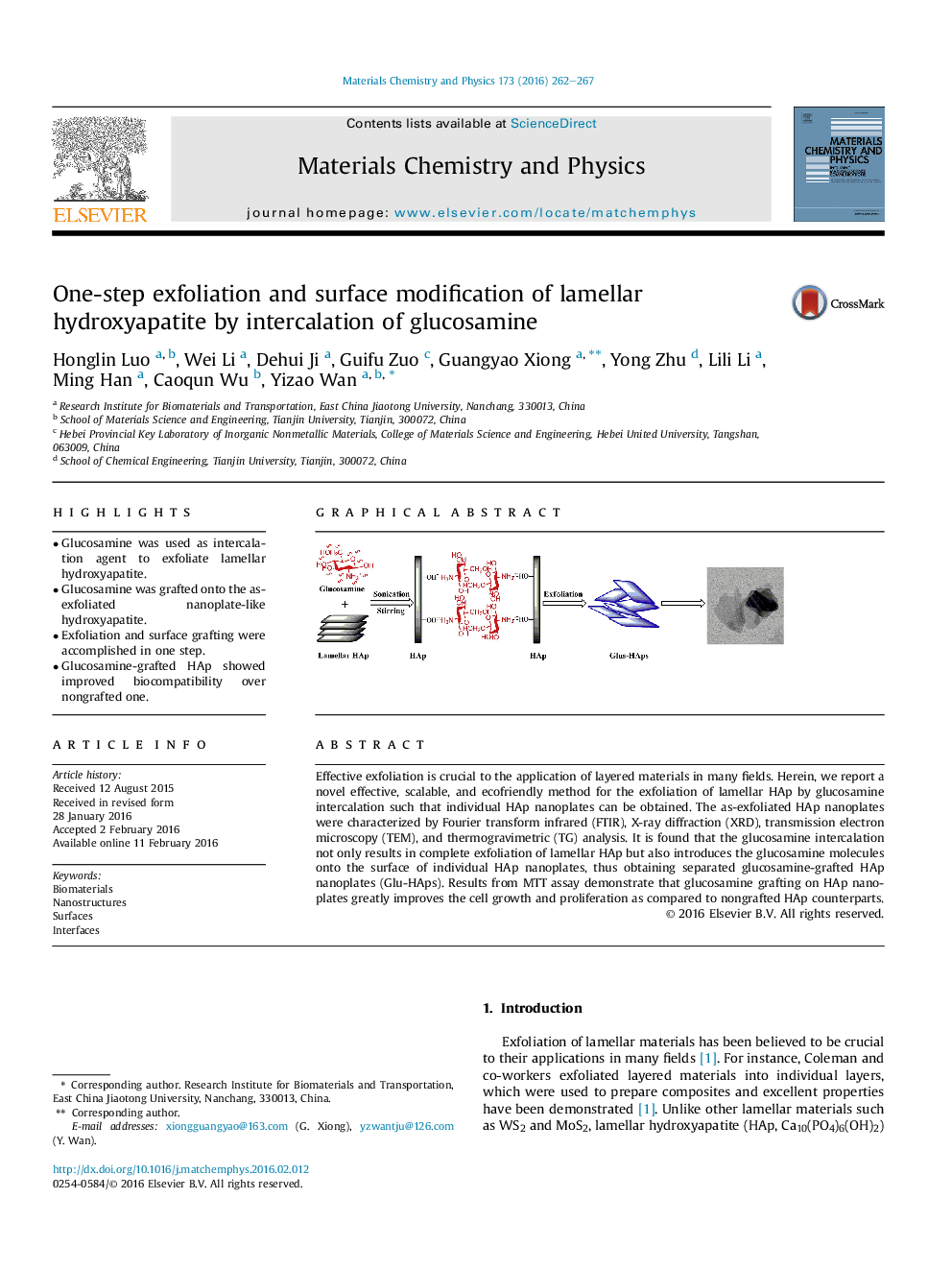| Article ID | Journal | Published Year | Pages | File Type |
|---|---|---|---|---|
| 1520690 | Materials Chemistry and Physics | 2016 | 6 Pages |
•Glucosamine was used as intercalation agent to exfoliate lamellar hydroxyapatite.•Glucosamine was grafted onto the as-exfoliated nanoplate-like hydroxyapatite.•Exfoliation and surface grafting were accomplished in one step.•Glucosamine-grafted HAp showed improved biocompatibility over nongrafted one.
Effective exfoliation is crucial to the application of layered materials in many fields. Herein, we report a novel effective, scalable, and ecofriendly method for the exfoliation of lamellar HAp by glucosamine intercalation such that individual HAp nanoplates can be obtained. The as-exfoliated HAp nanoplates were characterized by Fourier transform infrared (FTIR), X-ray diffraction (XRD), transmission electron microscopy (TEM), and thermogravimetric (TG) analysis. It is found that the glucosamine intercalation not only results in complete exfoliation of lamellar HAp but also introduces the glucosamine molecules onto the surface of individual HAp nanoplates, thus obtaining separated glucosamine-grafted HAp nanoplates (Glu-HAps). Results from MTT assay demonstrate that glucosamine grafting on HAp nanoplates greatly improves the cell growth and proliferation as compared to nongrafted HAp counterparts.
Graphical abstractFigure optionsDownload full-size imageDownload as PowerPoint slide
